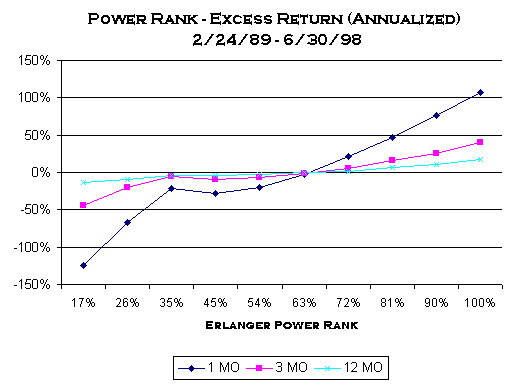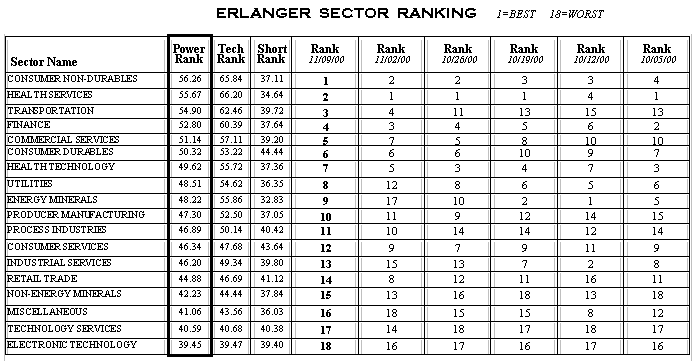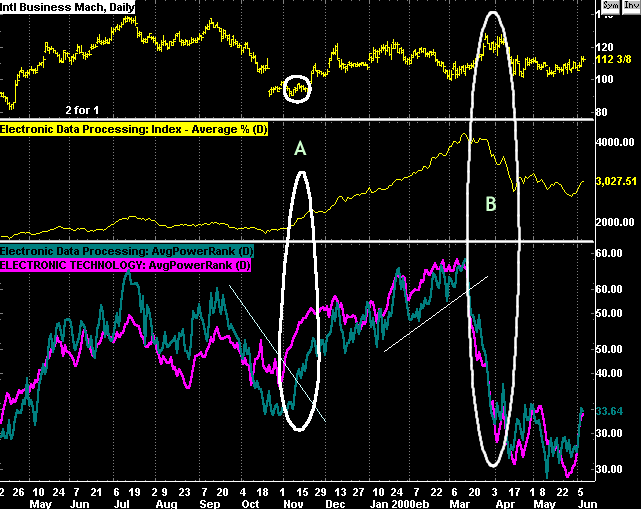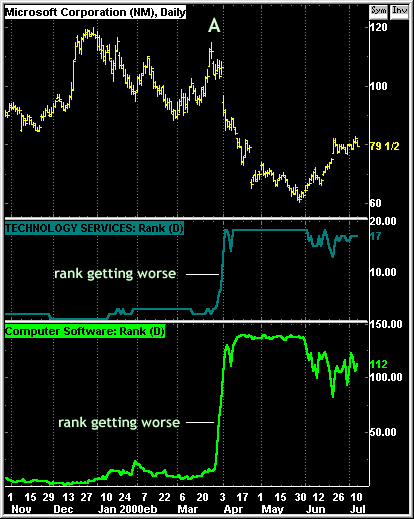|
STRATEGIES
Power Rankings of Groups and
Sectors
One of the most powerful applications of Phil Erlanger Research
data is the development of group and sector series. This section
describes the use of each stocks Erlanger Power Ranking in two (2)
ways:
AVERAGE POWER RANK
The Erlanger Power Rank is a composite of the Erlanger Technical
Rank (a measure of price relative strength) and the Erlanger Short
Rank (a measure of short selling intensity). Ranging on a scale
of 0% to 100%, the higher the Erlanger Power Rank, the more advance
price pressure being applied against a greater body of short sellers.
In other words, the greater the short squeeze! The lower the Erlanger
Power Rank, the weaker the price action is against excessively long
positions - a long squeeze! The follow graphic summarizes a recent
study of Power Rank performance:

Based on the Zachs performance measuring software, the above graph
shows the excess return (relative to the S&P 500) for the Power
Rank broken up into deciles. The worst decile (17%) clearly underperformed
the average even rebalancing only 12 months - but rebalancing every
month clearly improved results. The best returns on a 1 month, 3
month and 12 month term was generated by stocks of the best Power
Rank - 100%.
The Erlanger Power Rank is the single most important data series
in the Erlanger arsenal. Most rankings are based on this measure.
By taking the average Power Rank for each industry group and sector,
one can easily discern attractive groups and sectors from the unattractive.
Indeed, our weekly publication The Squeeze Play organizes
sectors ranked by "average" Power Rank. Here is an an
example:

The most exciting way to view Power Rank data is to look at group
and sector "average" Power Ranks over time! Consider the
following chart of IBM:

At point "A", IBM is bottoming... but the clues to the
next advance phase could clearly be seen in the group and sector
average Power Ranks, which advanced well in advance of IBM. At point
"B", IBM was trying to move to new highs, but the declining
group and sector power ranks highlighted the underlying weakness.
Please keep in mind that these group and sector rankings are NOT
capitalization weighted. This ensures that the "effect"
demonstrated by any of the Erlanger group or sector series is broadly
specific to that group and sector, and not the influence of just
a few large cap stocks. By capturing the group and sector action
in this way, the portfolio manager has an extra tool to help in
the decision making process.
GROUP AND SECTOR RANKS
While Erlanger 2000 gives you the capability to sort on most of
the Erlanger data series, all of the Erlanger group and sector rankings
are based on the power ranking. If a group has a rank of 1, that
group has the highest average Power Rank of all the 139 groups we
follow. A sector rank of 1 likewise measures the the highest average
Power Rank of all the 18 sectors we follow:

As can be seen above, the sectors are sorted by average Power Rank,
which also puts the Sector Ranks in order (see column dated 11/09/00).
By viewing groups and sectors in order of rank, the portfolio manager
can focus on those issues benefiting from a strong sector influence.

The above graph shows both the group and sector ranks rising (getting
worse) before MSFT declines. Worsening group and sector ranks highlights
increased risk for component issues.
|





